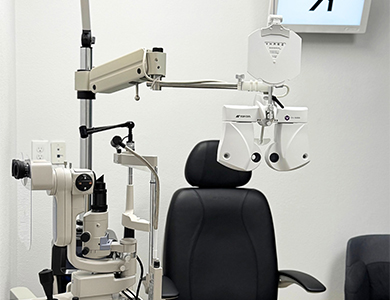
Myopia, also known as nearsightedness, is a common vision condition that affects a significant portion of the population. It is important to understand the causes, symptoms, and risk factors associated with myopia in order to manage and prevent its progression.
What is Myopia?
Myopia is a refractive error that causes distant objects to appear blurry, while close-up objects remain clear. This occurs when the eyeball is slightly longer than normal or when the cornea has too much curvature. As a result, light entering the eye does not focus directly on the retina, but rather in front of it.
Causes and Risk Factors of Myopia
Myopia is influenced by both genetic and environmental factors. Research has identified certain genes that are associated with the development of myopia. If these genes are present, the risk of developing myopia increases. However, genetics alone do not determine whether someone will develop myopia.
Excessive near work, such as reading, writing, or prolonged use of digital devices, has been linked to myopia. When the eyes are constantly focused on near objects, the eye muscles are strained, leading to elongation of the eyeball. This elongation causes the light entering the eye to focus in front of the retina, resulting in myopia.
Additionally, spending less time outdoors has also been associated with an increased risk of myopia. Outdoor activities expose the eyes to natural light, which is believed to have a protective effect against myopia development. Lack of natural light may disrupt the normal growth and development of the eye, contributing to the onset of myopia.
Recognizing Myopia Symptoms
Myopia can manifest in various ways, and it is essential to recognize the symptoms in order to seek appropriate treatment. The most common symptom of myopia is difficulty seeing distant objects clearly. People with myopia may find it challenging to read road signs, watch television, or see the board in classrooms without the aid of glasses or contact lenses.
Other symptoms may include squinting, eye strain, headaches, and fatigue. Squinting helps to temporarily improve vision by reducing the amount of light entering the eye, but it is not a long-term solution. Eye strain, headaches, and fatigue can result from the constant effort required to focus on objects that are far away.
The Importance of Myopia Management
Managing myopia is crucial for preventing its progression and reducing the risk of associated complications. There are various treatment options available, depending on the severity of myopia and individual needs. The most common methods of myopia management include:
- Orthokeratology: This involves wearing specially designed rigid contact lenses overnight to temporarily reshape the cornea and correct myopia. The lenses are removed in the morning, providing clear vision throughout the day.
- Atropine eye drops: Low-dose atropine eye drops have been shown to slow down the progression of myopia in children. They work by temporarily relaxing the focusing muscles in the eye, reducing the strain on the eyeball.
- Multifocal contact lenses or glasses: These lenses have different zones for near and distance vision, helping to slow down the progression of myopia in children.
Navigating Myopia with the Help of Focal Optometry
Myopia is a common vision condition that can have a significant impact on daily life. Understanding its causes, symptoms, and risk factors is essential for effective management and prevention. By implementing the various myopia management strategies available, individuals with myopia can maintain clear vision and protect their eye health for years to come.
If you are experiencing symptoms of myopia, schedule a comprehensive eye examination with our optometrist today. Visit Focal Optometry at our office in San Diego, California. We are committed to providing quality eye care services and products for the entire family. Please call (858) 330-4200 to book an appointment today.









